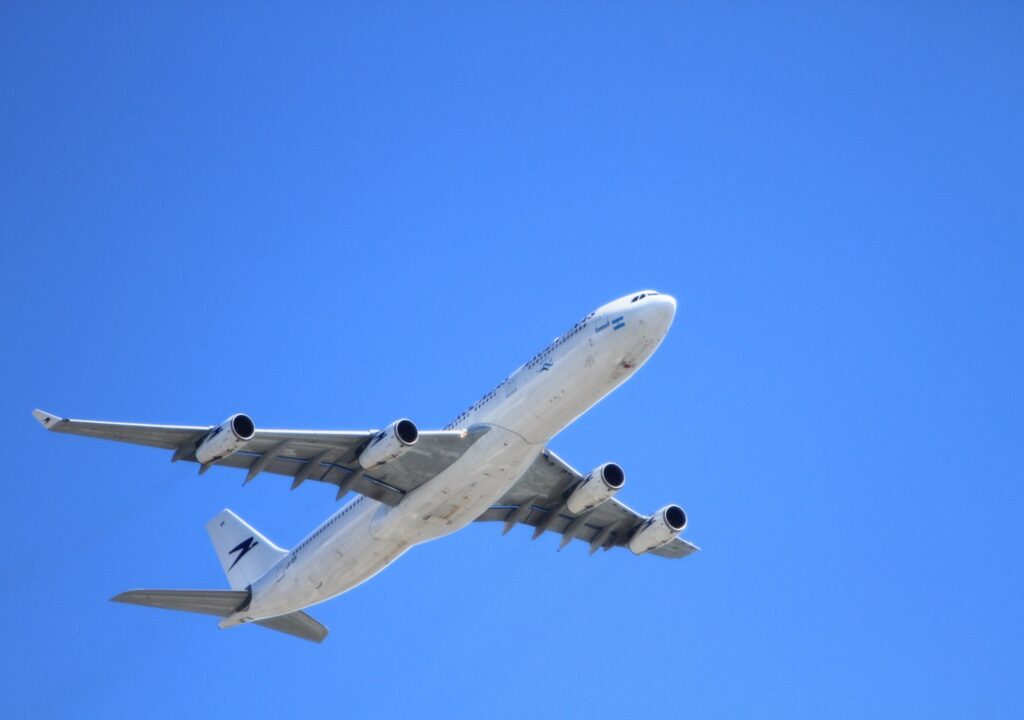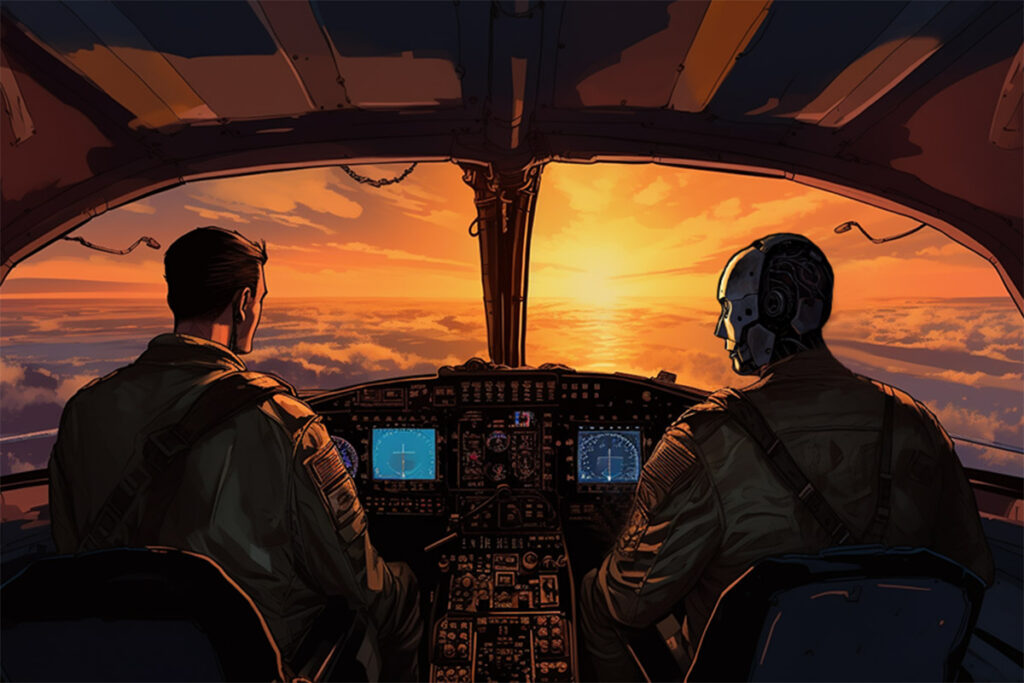
Situational awareness is crucial for aviation safety, influencing a pilot’s ability to detect and respond to airborne threats. With increasing air traffic, the rise of UAVs, and human perception limitations, traditional hazard detection methods face challenges. AI-powered solutions offer real-time object detection, predictive analytics, and enhanced decision-making. This article explores the evolution, impact, and challenges of AI-driven situational awareness systems.
Challenges of the Traditional See-and-Avoid Principle
The ”see-and-avoid” principle requires pilots to visually detect aircraft, but it has limitations in high-traffic airspace, poor visibility, and high-workload conditions (Skybrary 2025). Human factors—reaction time, vision limits, and distractions—make this method unreliable, increasing collision risks. Studies show that obstructions, sun glare, and blind spots often prevent pilots from detecting nearby aircraft.
Midair collisions, though rare, primarily occur near airports during approach and landing. The FAA reports that 45% happen in traffic patterns, with many during the base-to-final turn due to visual obstructions. Additionally, 82% involve one aircraft overtaking another, while 27% happen during cruise. Bird strikes are another hazard, with over 227,000 reported in the U.S. between 1990 and 2022, causing fatalities and economic losses (Federal Aviation Administration (FAA) 2023).
The rise of UAVs has further complicated aviation safety, as many operate in uncontrolled airspace without transponders (Experimental Aircraft Association (EAA) 2019). Visual scanning alone may not detect small UAVs in time. Advanced detection systems capable of real-time UAV identification are essential.
AI-Powered Situational Awareness Solutions
AI enhances situational awareness by integrating high-resolution cameras, radars, and AI processors for continuous environmental analysis. These systems identify moving objects, assess collision risks, and provide real-time alerts (IEEE Spectrum 2023). Deep learning models, trained on vast datasets, improve obstacle detection and classification. Unlike traditional systems that rely on cooperative signals, AI solutions detect non-cooperative objects like drones, birds, or aircraft without transponders (General Aviation News 2022). They also minimize pilot workload and assist in high-stress environments.

Picture 1. AI-Powered Situational Awareness Solution (Image: Alex Shipps/MIT CSAIL using the Midjourney AI image generator)
A key application of this technology is PilotX, a startup project focused on AI-powered aviation safety, which enhances general aviation safety through computer vision and collision prediction analytics (PilotX 2024). Using the NVIDIA Jetson Orin NX module, it processes data from aircraft-mounted cameras and delivers instant hazard warnings (NVIDIA 2024). Test flights demonstrated successful detection and tracking of airborne obstacles, even those invisible to ADS-B receivers (Federal Aviation Administration (FAA) 2023). By incorporating predictive trajectory analysis, pilots will receive early warnings, allowing preventive action (European Union Aviation Safety Agency (EASA) 2023).
Challenges and Future Prospects
Despite AI’s advantages, challenges remain in regulatory approval, pilot adaptation, and seamless cockpit integration (Deloitte Insights 2021). Aviation authorities like the FAA and EASA require rigorous testing and certification. AI-based safety enhancements must have intuitive interfaces that avoid overwhelming pilots with excessive information (Kotler & Armstrong 2017). Minimal latency is also crucial for real-time hazard detection (NVIDIA 2024).
As AI advances, its impact on aviation safety is expected to grow (McKinsey & Company 2022). Machine learning models are becoming more refined, and hardware improvements make AI-powered systems more accessible to various aircrafts (Aviation Today 2023). Future cockpits will likely integrate AI-driven solutions as standard features (PwC 2022), enhancing situational awareness, reducing cognitive workload, and improving safety (General Aviation News 2022). Collaboration between regulators, industry innovators, and aviation professionals is essential for effective deployment.
AI and the Path to Autonomous Flight
The development of AI-powered safety systems marks a shift towards proactive hazard detection and risk mitigation (ICAO 2022). By bridging the gap between human perception and automated decision-making, AI-driven solutions pave the way for a new era in aviation safety (European Union Aviation Safety Agency (EASA) 2023). As technology and regulations evolve, AI adoption will redefine how pilots navigate increasingly crowded airspace, ensuring safer skies for all (Federal Aviation Administration (FAA) 2023). In the long term, AI is intended to contribute to advancements in fully autonomous flight capabilities, transforming air travel. (Erhan 2025).
References
Aviation Today. 2023. Integrating AI in General Aviation. Cited 2 Feb 2025. Available at https://www.aviationtoday.com/ai-integration
Deloitte Insights. 2021. Advancements in Aerospace AI Safety Systems. Cited 2 Feb 2025. Available at https://www2.deloitte.com/aerospace-ai-safety
Erhan, V. 2025. Developing a start-up in general aviation: enhanced situational awareness in aircrafts using computer vision. Master’s thesis. LAB University of Applied Sciences. Cited 20 Feb 2025. Available at https://urn.fi/URN:NBN:fi:amk-202502253371
European Union Aviation Safety Agency (EASA). 2023. AI Integration in Cockpit Systems.
Experimental Aircraft Association (EAA). 2019. UAS: The Impact on General Aviation and What the Future Holds. Cited 2 Feb 2025. Available at https://www.eaa.org/eaa/news-and-publications/eaa-news-and-aviation-news/news/02-01-2019-uas-the-impact-on-general-aviation-and-what-the-future-holds
Federal Aviation Administration (FAA). 2023. Situational Awareness in Aviation.
General Aviation News. 2022.See and avoid: Ag pilots vs. drones. Cited 2 Feb 2025. Available at https://generalaviationnews.com/see-and-avoid
ICAO. 2022. Global Aviation Safety and AI Adoption.
IEEE Spectrum. 2023. The Role of Machine Learning in Aviation Safety.
Kotler, P. & Armstrong, G. 2017. Principles of Marketing. Harlow, England: Pearson.
McKinsey & Company. 2022. Trends in AI-Powered Aviation Technologies.
NVIDIA. 2024. Jetson Orin NX: AI Computing for Edge Applications.
PilotX Project. 2024. Enhancing Flight Safety with AI and Computer Vision.
PwC. 2022. The Future of AI in Aerospace Safety.
Skybrary. 2025. See and Avoid. Cited 2 Feb 2025. Available at https://skybrary.aero/articles/see-and-avoid
Authors
Vladimir Erhan is a student at the LAB University of Applied Sciences in a master`s degree program Master of Business Administration, Business Innovation Culture and Creativity. With experience in product management, he is focused on developing AI situational awareness solutions for general aviation pilots.
Dr. Jukka Sirkiä is a Senior Lecturer at LAB University of Applied Sciences. He has solid experience in customer-oriented business management of IT service companies and, in addition to his Senior Lecturer duties, works as a project expert in the business unit of LAB University of Applied Sciences.
Illustration: https://pxhere.com/en/photo/1150893 (CC0)
Reference to this article
Erhan, V. & Sirkiä, J. 2025. The Future of AI-Powered Situational Awareness in General Aviation. LAB Pro. Cited and the date of citation. Available at https://www.labopen.fi/lab-pro/the-future-of-ai-powered-situational-awareness-in-general-aviation/






